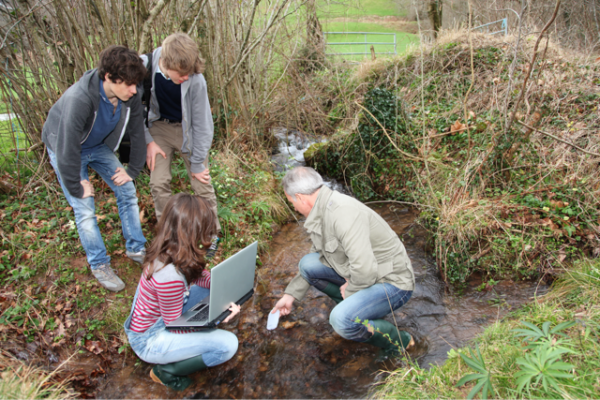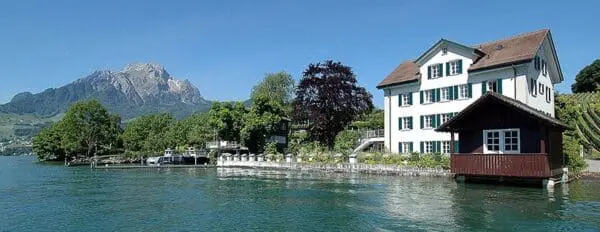
Nicolosi, Italy
Etna: Reading Landscapes, Risks and Heritage in a Volcanic Region
When:
26 August - 30 August 2026
Credits:
3 EC
Read more
Geo Sciences Summer Course
When:
29 June - 03 July 2026
School:
University of Pisa Summer School
Institution:
University of Pisa
City:
Country:
Language:
English
Credits:
3 EC
Fee:
500 EUR


Fiber-optic sensing has rapidly emerged as a transformative technology for monitoring and understanding different geological, geophysical, and environmental processes. By exploiting existing telecommunication infrastructure or purpose-built cables, distributed fiber-optic sensing, such as Distributed Acoustic Sensing (DAS), Distributed Temperature Sensing (DTS), and Distributed Strain Sensing (DSS), enable high-resolution measurements across large spatial and temporal scales. These approaches open new perspectives in environmental monitoring, natural hazard assessment, and geophysical exploration by providing datasets characterized by a spatial and temporal resolution that would be otherwise impossible to obtain with conventional instruments.
In recent years, fiber-optic sensing has been successfully applied across a wide range of geoscience and engineering disciplines. These applications include tracking seismicity with unprecedented spatial coverage, imaging subsurface structures, monitoring permafrost dynamics, detecting landslides, quantifying groundwater flow, and assessing the stability of civil infrastructures. Beyond natural environments, fiber-optic networks have also been used to monitor urban noise generated by vehicles and pedestrians, offering new perspectives on urban dynamics and anthropogenic activity.
Thanks to its versatility, scalability, and ability to exploit existing telecommunication cables, fiber-optic sensing is rapidly becoming a transformative research tool in the geosciences. Its relevance is particularly pronounced in the context of the ongoing energy transition, where there is a growing need for advanced monitoring technologies to ensure the safe and sustainable development of renewable energy systems, subsurface storage facilities, and carbon capture and sequestration projects. As such, fiber-optic sensing is not only opening new scientific frontiers but also providing critical insights to address some of the most pressing environmental and societal challenges of our time.
The program of the school is the following:
DAY 1
- Introduction to Distributed Acoustic Sensing (DAS) and its applications in geosciences, with a brief overview of other fiber sensing methods (interferometry, State-of-polarization).
- Introduction to signal processing tools for DAS.
- Seminar by an invited speaker with key experience in DAS.
- Demonstration of SOLGEO DAS Interrogator with a test installation in the Department of Earth Sciences garden (monitoring urban noise, “noise of a university”, and active ground energization).
DAY 2
- DAS data and metadata formats, current status, and future directions
- DAS data features with both horizontal telecommunication and in-well cables (gauge length, channel spacing, azimuthal sensitivity, coupling, etc.).
- Challenges with noise in DAS data.
- DAS data processing workflow (data pre-processing, filtering, denoising).
- DAS denoising: basic and advanced methods, with hands-on exercises on FK filtering and spectral subtraction.
DAY 3
- Detecting seismic events with DAS.
- Challenges arising from high data density in real-time. How to integrate DAS into existing networks?Subsampling strategies and innovative automatic DAS channel selection.
- Event detection using semblance (Porras et al., 2024).
- Efficient subsampling with ORION.
DAY 4
- Earthquake location with DAS and with next-generation hybrid networks (DAS + seismometers)
- Introduction to source characterization (magnitude and focal mechanism estimation) with DAS
- Exercise with event location using DAS and hybrid networks (earthquake sequence).
- Creation of a small DAS-based earthquake catalog.
DAY 5
- Poster session and round table: participants present potential applications of DAS to their own projects.
- Data Sources
- Horizontal telecom cables (Kefalonia).
- Well installation (FORGE).
- Data from the DST garden experiment.
The Summer School will be activated with at least 8 students. The maximum number of participants is set to 25 students.
The Summer School will be held on campus, in Pisa, at Dipartimento di Scienze della Terra, via Santa Maria, 53.
The program will be activated also in distance learning mode (TEAMS platform)
Prof. Francesco Grigoli
Graduate Students, Early-Stage Researchers, Professionals
This summer school aims to provide participants with a solid foundation in fiber optic sensing for geosciences.
The program is designed for a broad audience, from early-career researchers to experienced Academic/industry scientists/professionals interested in exploring DAS, and will include:
1. Introduction to fiber optic sensing, focusing on DAS, with an overview of basic tools for data handling and preprocessing;
2. Instrument demonstration in an urban setting, followed by a hands-on session with freshly acquired data to simulate a new experiment workflow;
3. Lectures on DAS data processing and existing applications of DAS in geosciences, highlighting case studies and potential research;
4. Practical exercises on data denoising, event detection, and location;
5. Round-table discussion to support participants in designing experiments and integrating DAS into their own research/professional projects
Fee
500 EUR
When:
29 June - 03 July 2026
School:
University of Pisa Summer School
Institution:
University of Pisa
Language:
English
Credits:
3 EC

Nicolosi, Italy
When:
26 August - 30 August 2026
Credits:
3 EC
Read more

Pisa, Italy
When:
22 June - 26 June 2026
Credits:
3 EC
Read more

Lucerne, Switzerland
When:
31 May - 05 June 2026
Credits:
2 EC
Read more